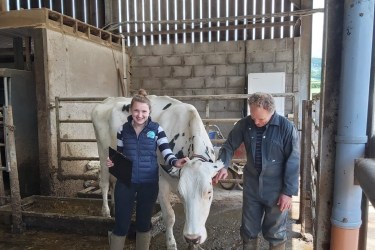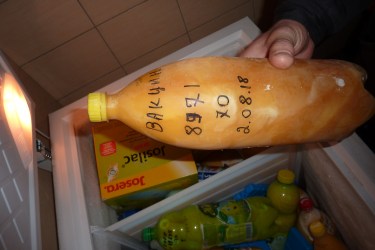By Andy Taylor
Raising heifer calves is the second largest annual expense to a dairy farm. This accounts for approximately 20 to 30% of your business production cost, after feed. Heifers are the future of the herd, however, they are producing no income until they reach the first lactation. Therefore, it is essential for them to have the most advantageous start, to repay your investment with higher milk production and longevity.
To ensure the best start in life, calves must have access to top-quality colostrum. This provides antibodies, crucial for protection against conditions such as pneumonia and scour. Research from the University of Minnesota have initiated the five “Qs” of colostrum management which include:
- Quality of colostrum fed (Goal: IgG > 50 g/L)
- Quantity of colostrum fed (Goal: 10 percent of birth weight at first feeding)
- Quickness of the first colostrum feeding (Goal: within 1-2 hours of birth)
- SQueeky clean (bacterial contamination) (Goal: < 100,000 cfu/ml total bacteria count and <10,000 cfu/ml fecal coliform count)
- Quantifying (monitoring) passive transfer (Goal: ≥ 90 percent of calves with blood serum TP ≥ 5 g/dl)
Bacterial contamination is a relatively new management issue that is actively being researched. Research has shown that bacterial contamination of colostrum can significantly contribute to calf disease. Also, interfering and reducing the passive absorption of colostrial antibodies. Therefore the “sQueeky clean” aspect of colostrum management is becoming a key area to focus on. We encourage adopting the following management strategies to reduce bacterial counts in colostrum fed to calves, focusing on the colostrum harvest, storage and feeding processes. Some key areas to consider are:
- Cow – When the fresh cow is milked, ensure the teats are as clean a possible following the Dip-Wipe-dip-Wipe/scrub method using the pre dip solution or an iodine-based solution.
- Harvest – ensure the equipment used for collecting colostrum is clean and free from any bio-film. This can be done by using chlorinated detergent and scrubbing with a stiff bristle brush and green scouring pad. Ensure water is kept above 48.9 °C Follow the Rinse-Wash-Rinse-Dry protocol. Also do this step for all buckets and feeding equipment!
- Collection and chilling – Once colostrum is collected in a sterile milking unit, place two frozen two litre bottles of water into the dump bucket to rapidly cool the colostrum to around 16°C. ( Coliform bacteria take 150 minutes to double at 16°C compared to 20 minutes to double at cow body temperature, 38°C)
- Storage – Colostrum should be tested for quality and good colostrum stored in a fridge for no longer than 24 hours in 1-2 litre containers – Or- frozen immediately in 1-2 litre zip bags. Ensure all colostrum is labelled with collection date and cow identity.
- Reheating – Frozen colostrum can be thawed in a refrigerator overnight. Both fresh and frozen should be warmed in a water bath (50°C Max) so the colostrum reaches 40-42°C, giving time for it to cool to 38°C before feeding. Once warmed, feed the colostrum within 30 minutes.
Remember, too, when using milk replacers this mixing and feeding equipment sanitation is a critical step in maintaining good calf health. If you are concerned with the hygiene of your colostrum, you can have it tested for bacterial counts at the point of feeding. Ask your vet or consultant for more details about this and protocols.







